Results 451 to 460 of 982
Thread: J-Nat club
-
01-19-2016, 12:29 PM #451Senior Member

- Join Date
- Sep 2014
- Location
- Bulgaria
- Posts
- 840
Thanked: 168
The last of the 3 Jnats - the mysterious stone
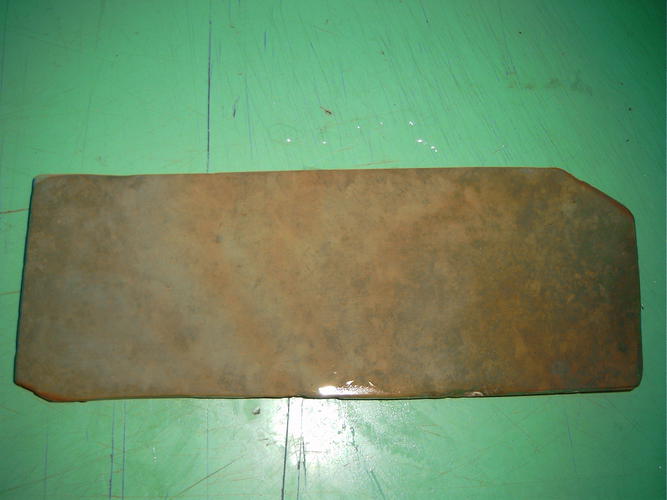
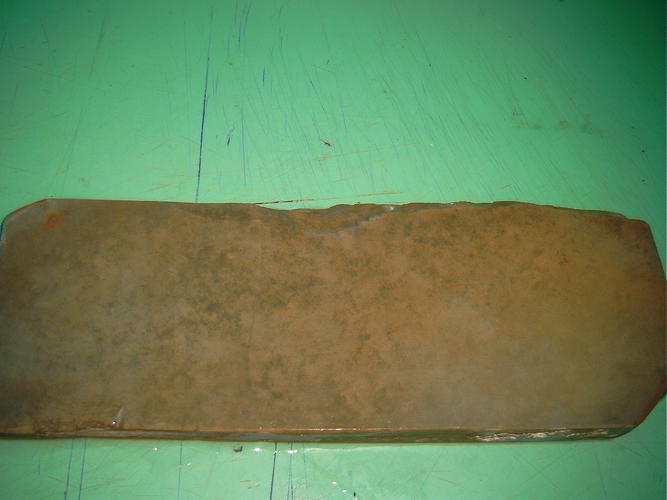
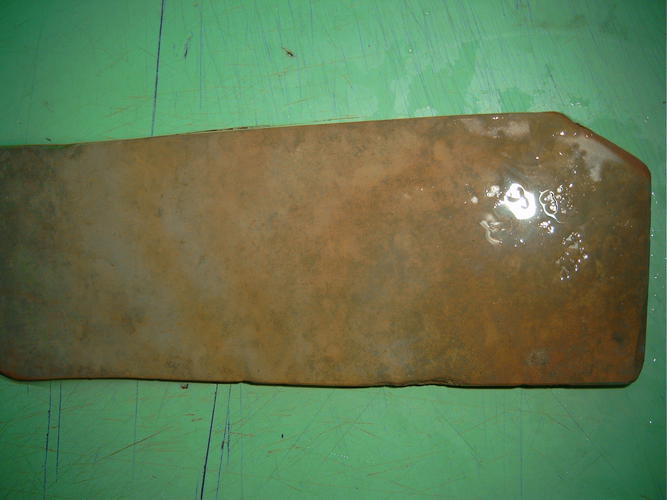
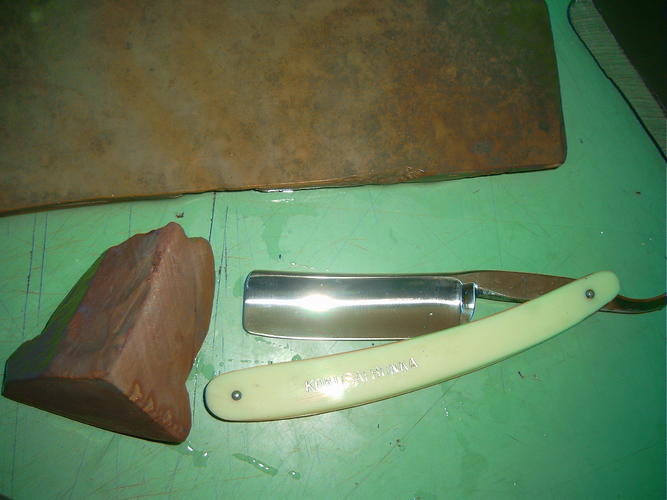
-
01-20-2016, 09:43 AM #452Senior Member

- Join Date
- Sep 2014
- Location
- Bulgaria
- Posts
- 840
Thanked: 168
I believe the last one is suita - amazing fine prefinisher
-
01-20-2016, 11:03 AM #453

All very nice.
Nice additions.
Myron
-
01-20-2016, 02:16 PM #454

I received a stone today. I was looking for a soft stone with good cutting power, for sword polishing, but not uchigumori because they cost a lot and have inclusions. I saw a nice one at a nice price, and bought it. The photos of the stone are below;
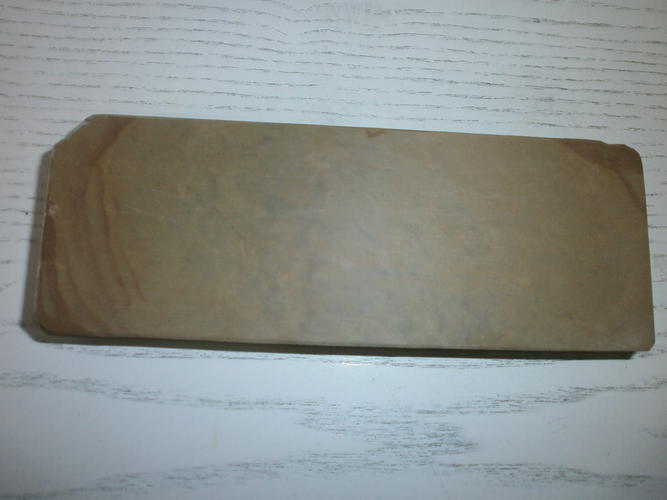
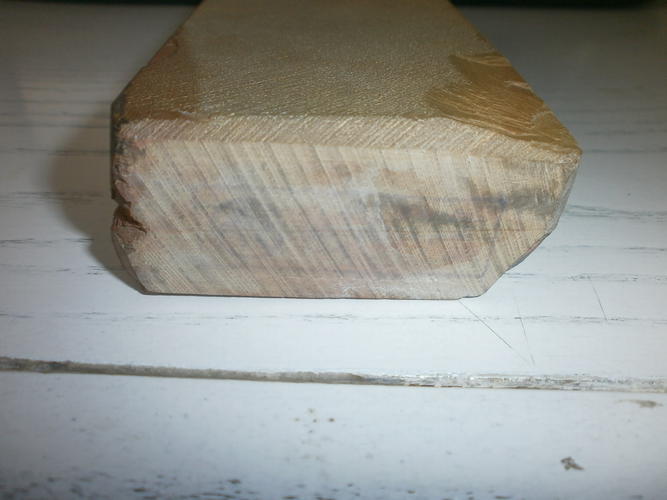
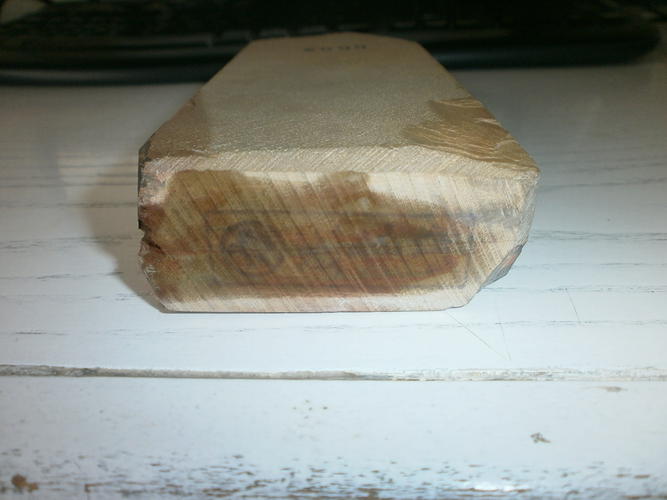
Darn fine, very hard, unsuitable for sword, with a nice karasu pattern, and, what is that on the side of the stone? Looks like a stamp. It's a nakayama Maruka!
I would say "darn! that's not a sword stone!" still, a Maruka. I guess my swords will have to wait.
As I am clueless about the strata of the stone, any help would be appreciated. There are no su, and it's quite hard. Aside from the skin on the sides, the back side looks just like the front one. Tomoe perhaps?
I got the stone a lot cheaper than a Maruka would cost, so I contacted him if he wants it back. We'll see until he answers, in the meantime, I'll be shaving with it.
-
The Following User Says Thank You to Vasilis For This Useful Post:
tonybee (10-12-2016)
-
01-20-2016, 03:00 PM #455Senior Member

- Join Date
- Sep 2014
- Location
- Bulgaria
- Posts
- 840
Thanked: 168
Swords - Vasilis what swords , man . Explain me i canot understand a word
Isnt the 2 stones suita
And haw we can difere suita from a other layers and what is suita , diferent with .
Nobody talks abbout the propertys of the layers , only Alex and he speaks rarely .
-
01-20-2016, 03:38 PM #456

Well, swords. The sharp and pointy, most beautiful works of art that are extremely misunderstood and considered weapons in most parts of the world, while most crimes involve bats, clubs and knives...
What do you mean "isn't the two stones suita"?
In any case, each and every one of the stratas offer hints of different characteristics that we can find out which stone is from where. I would also doubt that each extracted stone from a mine would have a sticker on it with the name of the layer, this categorization would happen after the extraction, so, it's not too late to find the strata any stone is from.
-
01-20-2016, 03:56 PM #457

Hi Rusen,
Suita is literally 'nest stone" named for the gas bubbles in most of the suita layers and they mean a 'bee's nest' or honeycomb. Not all suita have su, there is an uncommon layer called 'sunashi' which means 'without su'. Su also commonly occurs in other layers, but a stone has to be from a suita formation or layer to be a suita.
There are three suita 'formations" according to So-San's site, Tenjyou ('upper', or 'ceiling'), Shiro, and Hon. The last two are 'floor' or 'carpet' suita meaning they are at the bottom of the formations. Tenjyou has 4 layers, uchigumori, sotogumori, nagagumori, and shiro (white). Hon has 6 layers and shiro 2 layers. There is also a sunashi suita layer that occurs between the lower suita layers but this layer is uncommon. Suita can range from very soft to very hard, coarse to fine.
Also, there are two types of uchigumori commonly described, hato and jito. You have some of these. Hato is softer and used to polish the hagane or hard steel in a laminated blade. Jito is harder and used to polish the soft cladding of a laminated blade.
Suita colors usually range from grey to cream to white, but other colors can occur especially in the sunashi suita layer.
The first stone is a tenjyou suita with a karasu pattern and renge. The second stone is a hato uchigumori. The third is a sunashi suita and the last image is a shiro suita that I have labeled the common suita features.
I am by no means an expert, but if you have questions I will try to answer them and not be too wrong!
Cheers, Steve
-
The Following 4 Users Say Thank You to Steve56 For This Useful Post:
doorsch (01-28-2016), dta116 (09-13-2016), mlvallance (11-13-2017), Vasilis (01-20-2016)
-
01-20-2016, 04:26 PM #458

Steve, are you referring to a specific mine, like Ohira? I think every mine has its unique names for everything. But your answer is a nice one, thanks.
-
01-20-2016, 04:45 PM #459Senior Member

- Join Date
- Sep 2014
- Location
- Bulgaria
- Posts
- 840
Thanked: 168
Thanks Steve a beautyfull answer . Its just intresting from me what are all the stones we get.
Seems that my last stone and the Vasilis stone looks and share common characteristics .
I didnt have suita so the colors of the tone mislead me to think it is one .
Vasilis knows that his stone is Nakyama , but we both didnt know what kind of layers are they
Mine is very hard and i think that is a prefinisher , but i raise a slurry today after 10 minytes of rubing with a jasper slurry stone and the slurry of my stone is fine like milk and still very agresive cuting .I have another stonelike this one , so hard and it is very strong cutter also .
Where did those ultra hard stones came - deep layers - Namit , Aisa . Tomae or they are some suitas or a kiitas of unusual patern . Assagis maybe ??????
Its intresting as the more i know abbout Jnats - the more fascinating i am
I was joking with the guys that were asking for a coticule layers and now i am in the same position .
It was intresting how can we difere the suita and sunashi suitas from other Jnats .How we can tell if the stone is suita , at all
Imposible maybe ???
-
01-20-2016, 05:07 PM #460

Hi Vasilis,
It is my impression that the names are geological names and do not vary from mine to mine though not every mine has every layer.
The first stone the tenjyou suita, is a Narutaki or at least it was stamped with that name. The second, the hato, is a current Ohira stone. The sunashi was sold as a Nakayama, and I have seen one other with the very unique color and pattern from a different seller that also described it as Nakayama. The last I believe is an Okudo based on the bright orange skin on the back, but could be Nakayama.
Cheers, Steve


 2050Likes
2050Likes LinkBack URL
LinkBack URL About LinkBacks
About LinkBacks






 Reply With Quote
Reply With Quote
